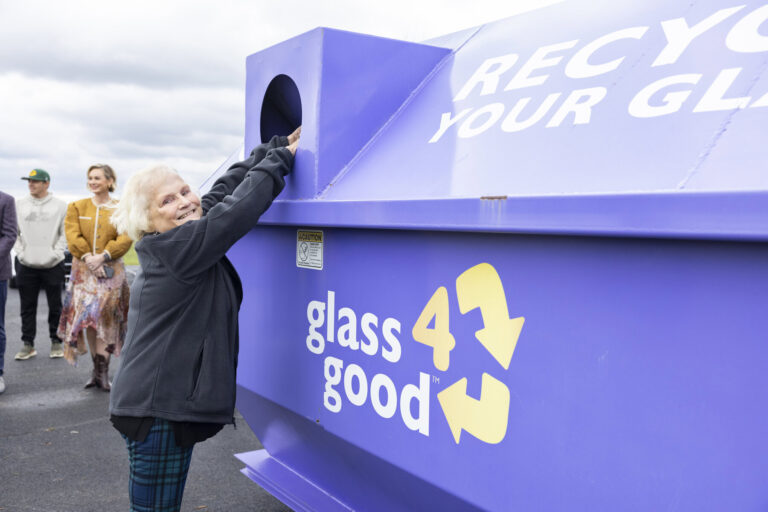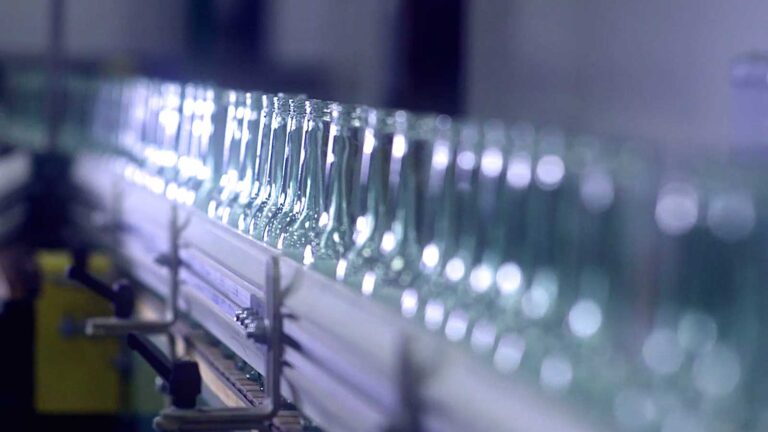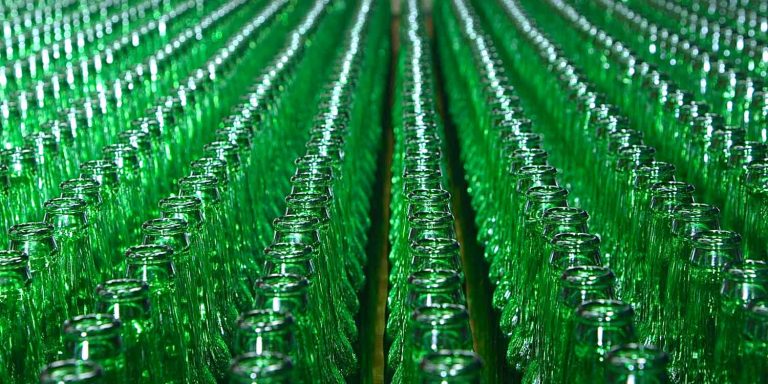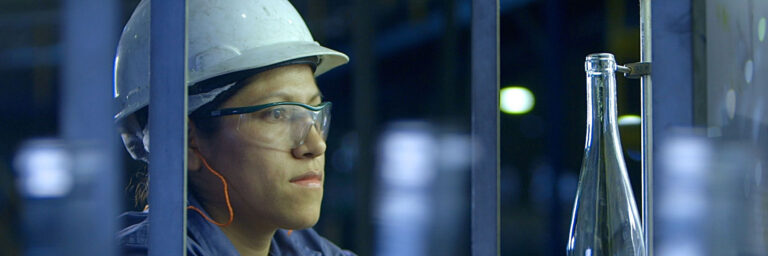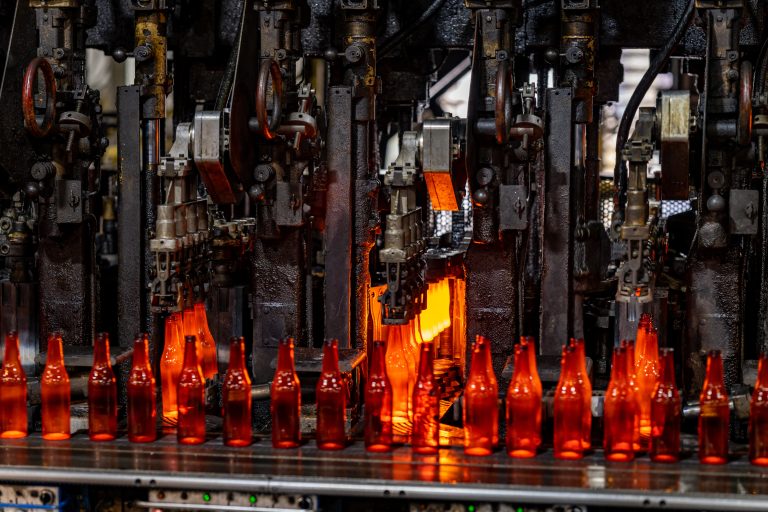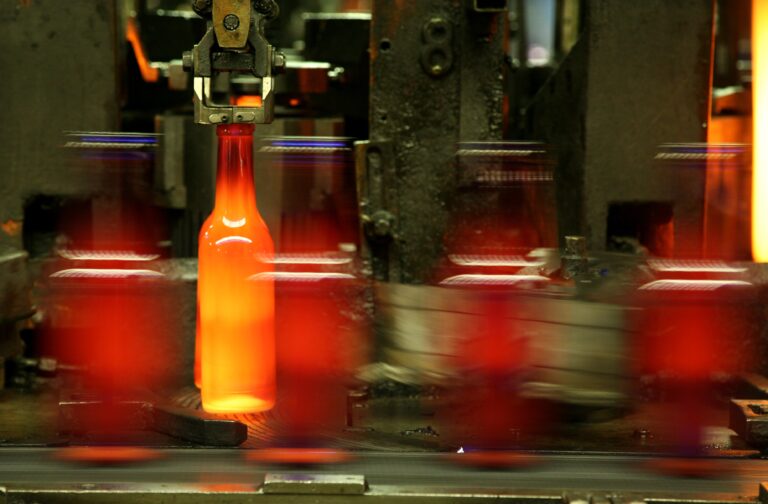Sustainable wine packaging is a complex topic, with implications for wine producers, wine-loving consumers and packaging providers. Wine industry insiders shared compelling consumer research, case studies, and collaborative partnerships that are creating impact during the “Wine, Glass and Sustainable Development” webinar, hosted by O-I Glass.
Frederic Choumert from McKinsey, the global management consultant firm, revealed consumer trends from its latest survey. The survey was carried out with 11,000 consumers in 11 countries. The headline from the findings: a megatrend in which consumers have vastly rising expectations for sustainable products through each stage of the value chain. Consumers are considering sustainability impacts of everything from recyclability to environmental damage (e.g. ocean plastics) and greenhouse gas emissions.
While consumers focus on sustainability, price and quality remain factors, too.
“When you ask about packaging, environment is top,” Frederic revealed. “When you ask about products in that packaging, quality and price are still top. But even with products, the environmental aspect is increasing.”
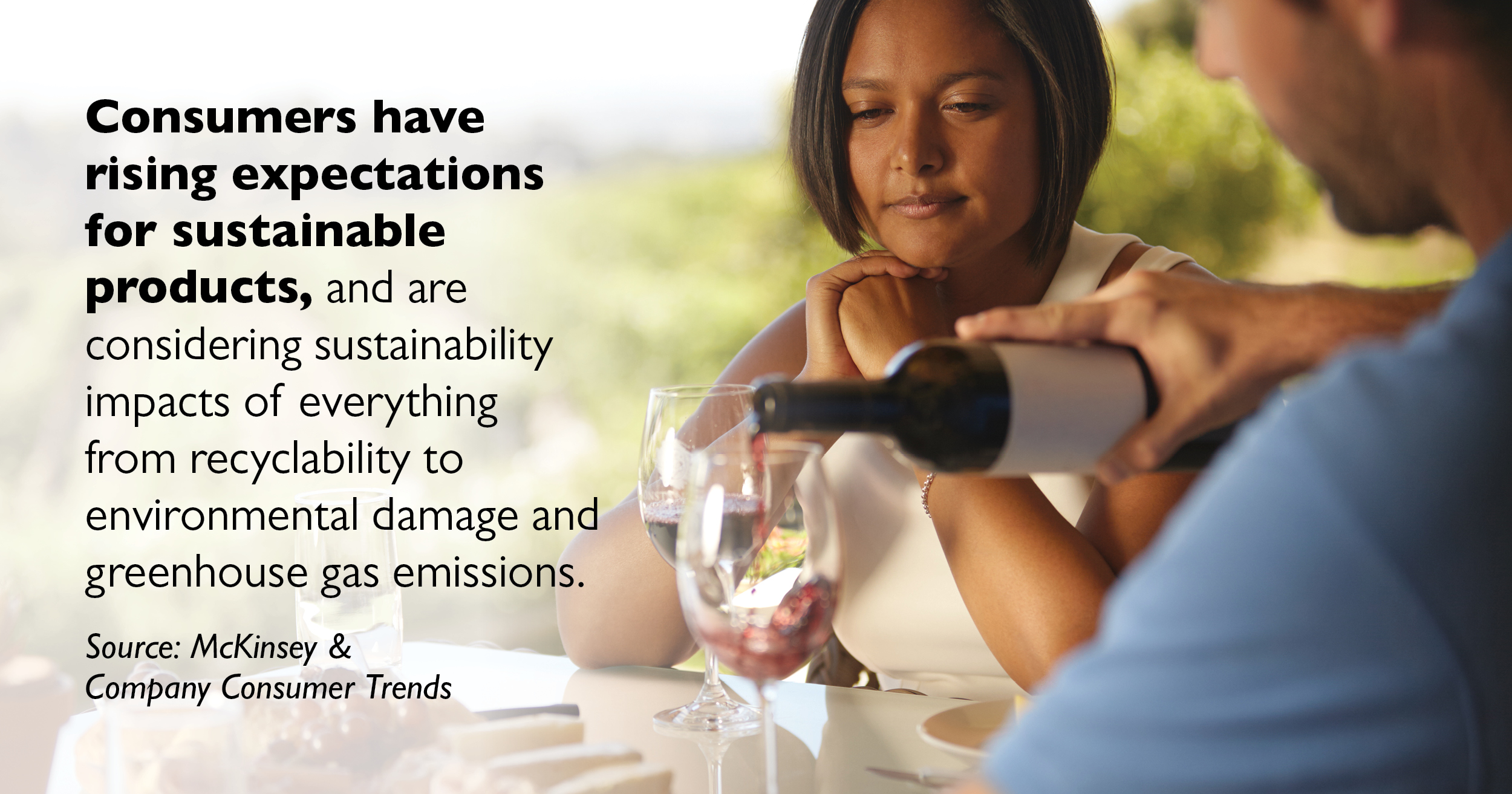
How can the wine industry not only create sustainable practices but also communicate those to the wine-loving consumers – wine-loving consumers that are educating themselves on sustainability and then turning that education into purchasing power? Four themes emerged during the digital event:
- Collaboration across the wine supply chain is vital
- Pragmatic trade-offs must be made
- Investing in scalable sustainable technology is creating optimism today
- Crafting positive messages so consumers understand the value
Let’s start with collaboration across the wine supply chain, because partnerships are proving fruitful.
Collaborating Across the Wine Value Chain
Anne-Laure Ferroir from Terra Vitis spoke about the industry’s increased collaboration throughout the supply chain via the Sustainable Wine Roundtable (SWR). SWR is a global collaborative platform to advance sustainability across the wine industry.
Originally set up three years ago in the UK, SWR now has representation from the entire wine supply chain, with 120 members representing various parts of the industry. O-I has just become the first glassmaker to join.
“These are problems to which there are solutions, but these are not solutions to which we can arrive by working independently. We must work together,” Anne-Laure emphasized.
Union des Vignerons des Cotes du Rhone is another collaborative group focused on sustainable wine practices. The Union is a cooperative of 200 winegrowers, and it’s the first cooperative winery to carry out carbon assessment across all three scopes.
Sylvie Darves spoke about another achievement from the Union’s work. It set up a commission of young winegrowers to look at disease resistant grape varieties. The results of their work have now come to market as La Resistance, a new wine that demonstrates the Union’s commitment to sustainable development in wine. La Resistance is packaged in a brand new lower weight, lower carbon glass bottle called BO Estampe™ from O-I.
The Union intentionally sought out a sustainable wine bottle. Not only is the lighter weight wine bottle produced nearby at O-I’s Labegude glass making plant, but its carbon footprint and carbon reduction plan has been validated by the Carbon Trust.
La Resistance as well as the carbon assessment are, in Sylvie’s words, “Two disruptive and virtuous innovations on the theme of low carbon.”
Trade-Offs Support Wine Sustainability
Which packaging is the most sustainable for wine bottles? McKinsey’s Frederic Choumert says there’s a lot of opportunity to develop a rapport with consumers – but also, “there are a lot of trade-offs that need to be made to find a solution that meets consumer expectations.”
Consumers are prepared to make those trade-offs. Coca-Cola introduced a 50cl bottle made from 100% recycled plastic. It is a little less transparent than a virgin PET bottle, but that did not have a negative impact on consumption.
“Consumers are ready to do this kind of trade-off between a little less attractive appearance and a more recycled product,” Frederic says.
Anne-Laure Ferroir agrees that packaging decisions must be pragmatic. Wineries need packaging which will not break, will safeguard the wine’s quality and taste, and will meet consumer expectations.
“Glass is a real solution which is a guarantor of the quality of the wine product,” she says, “which is still strongly demanded by consumers.”
These trade-offs can challenge traditional assumptions. Clear glass is often used for white wine, but it contains less recycled glass than other colours. Could Walter Ferrer, managing director of O-I in France and Spain imagine returning to a green bottle to reduce light strike and contain more recycled content?
“There are pros and cons on both sides,” Walter says. O-I discusses such things openly with clients. In other European countries, white flint glass becomes half-white, so these trade-offs are taking place.
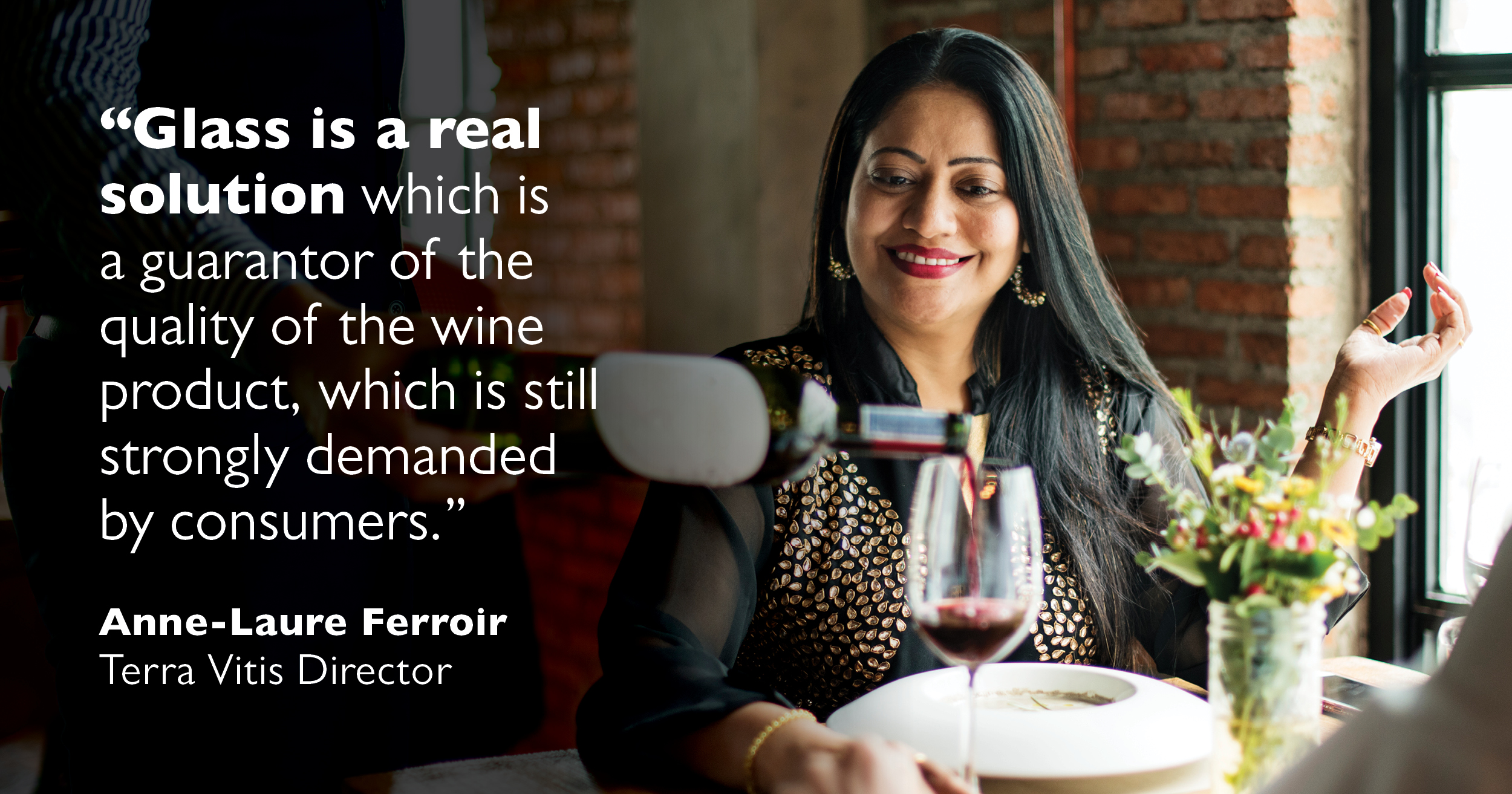
Investing in Sustainable Glass Making Technology in Wine Regions
Watler Ferrer highlighted O-I’s three-pronged approach to sustainable wine packaging improvements: technology, eco-design, increased recycled content.
A recent example of employing scalable sustainable technology is O-I’s recent installation of gas-oxygen combustion technology in O-I’s Vayres plant in Bordeaux. Vayres produces as much as 400 million bottles a year, many for the wine makers in the famous Bordeaux and Cognac vineyards, and the advanced technology is set to reduce energy consumption, cutting CO2 emissions by as much as 20% and NOx emissions by up to 60%.
Lightweighting remains a hot topic for wine producers. The Estampe bottle – the one that’s packaging the Union’s La Resistance – is the latest to join O-I’s existing portfolio of lighter weight glass bottles that demonstrate packaging can be both gorgeous and sustainable.
Communicating Sustainable Advancements in Wine to Consumers
McKinsey’s research shows that compostable packaging in Europe is rising in popularity and non-compostable items – glass, plastic, metal – are perceived as less eco-friendly than they were three years ago. This goes to show the need to communicate sustainable advancements to consumers.
The experts on the roundtable were in strong agreement of the need for more consumer communication and education about the full recyclability of glass packaging, the benefits of high cullet levels in glass manufacturing, and empowering consumers to consciously recycle glass.
Increasing the use of post-consumer glass, known as cullet, is a priority for glass makers — but “Cullet is not even a word that is understood by most consumers,” moderator Anne Burchett pointed out.
Vanessa Chesnot, head of public affairs at FEVE, amplified this point. All packaging put on the market in Europe must be recyclable by 2030-35. Packaging will be classified according to its recyclability performance, and this will influence what producers will have to pay eco-organisations.
Glass is not “theoretically” recyclable – it is inherently recyclable and 100% recyclable infinitely. A glass bottle can become a new glass bottle – without degrading quality – again and again and again. Other packaging materials cannot.
In Europe, glass also has a strong the infrastructure to collect, recycle and remelt. In France, for example, the recycling system is performing well, with 80% of glass collected and a goal of 90% by 2030. This fact is one of the many that could help wine consumers in France more fully understand the sustainability of glass wine bottles.
It was clear through the webinar that the complexities of sustainable wine packaging are many, but the creativity, collaborative spirit, and passion for the topic continues to drive us forward collectively to support a sustainable future.
